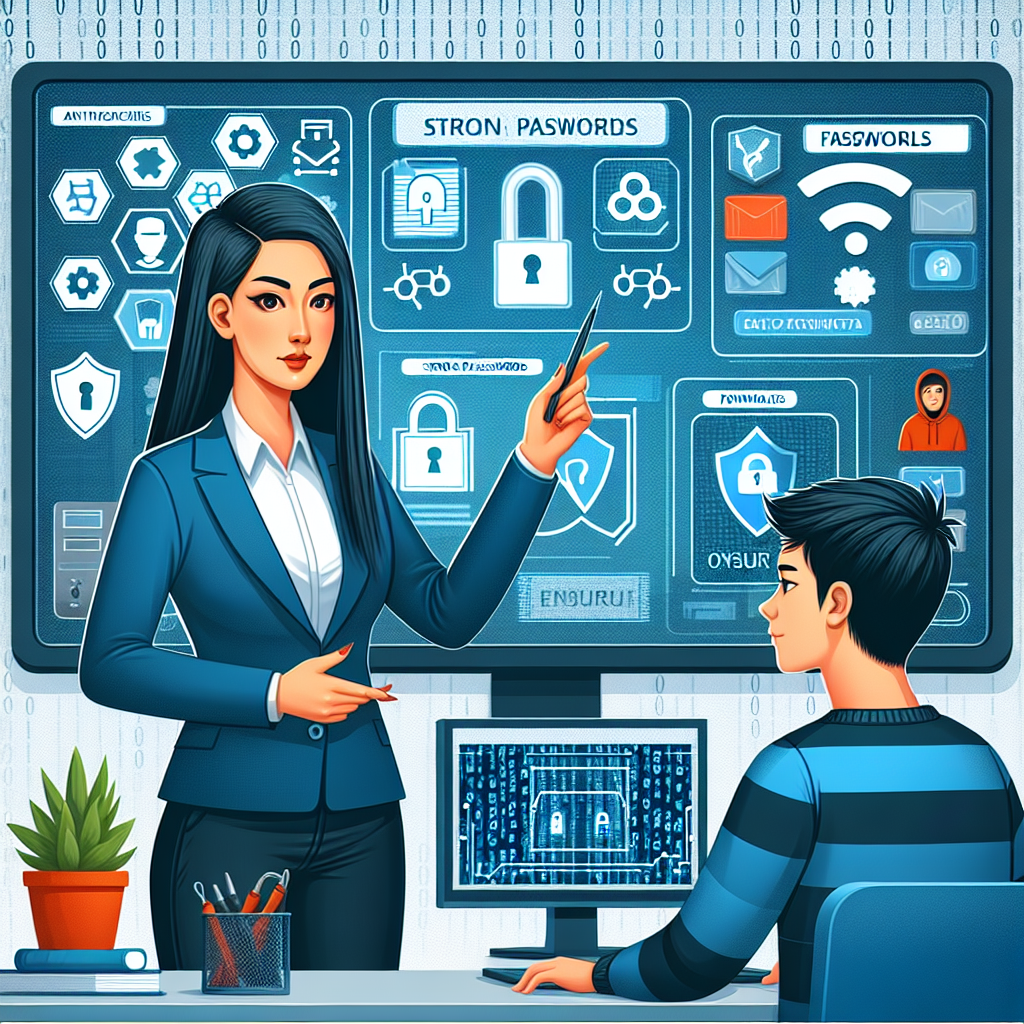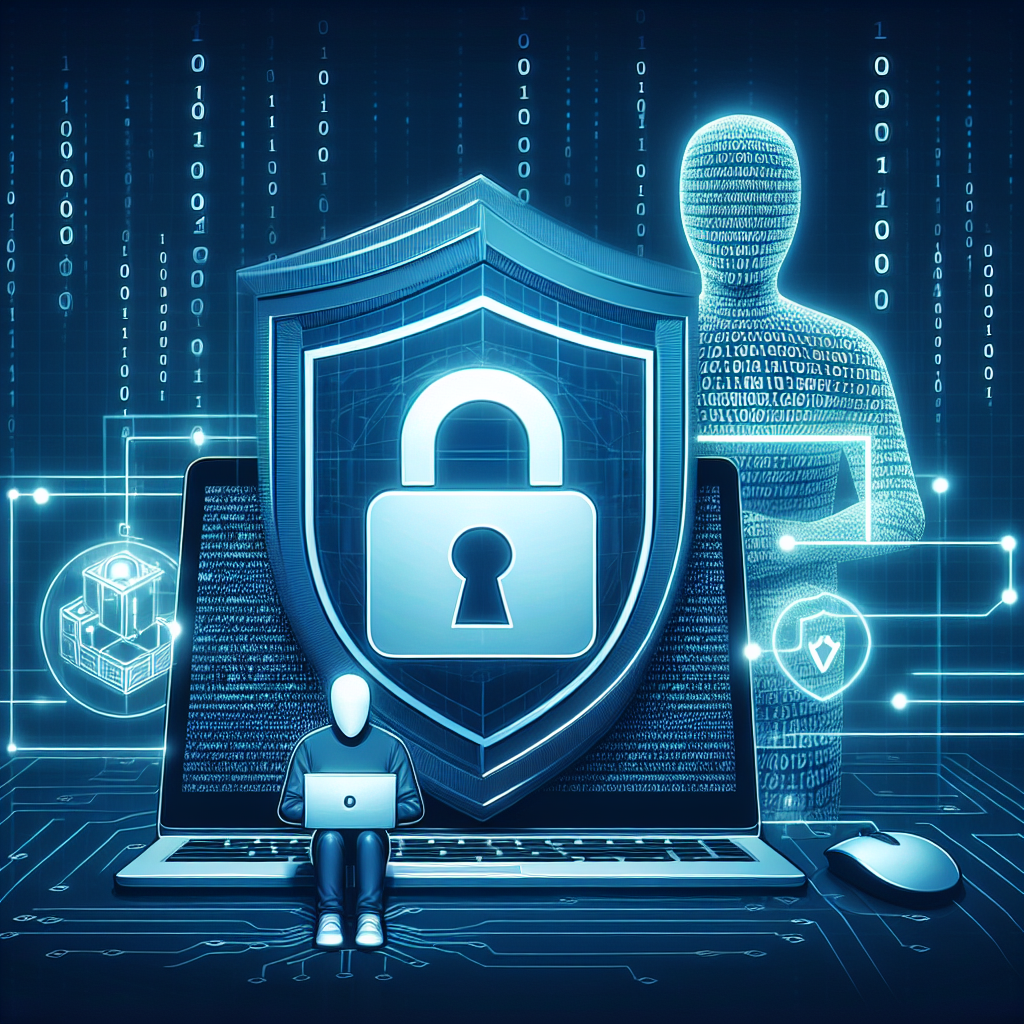-
Table of Contents
- Cybersecurity: How to Stay Safe Online
- Understanding Cybersecurity Threats
- Use Strong and Unique Passwords
- Enable Two-Factor Authentication (2FA)
- Be Cautious with Emails and Links
- Keep Software and Devices Updated
- Use Secure Networks
- Protect Your Personal Information
- Educate Yourself and Others
- Backup Your Data Regularly
- Conclusion
Cybersecurity: How to Stay Safe Online

In today’s digital age, cybersecurity is more important than ever. With the increasing reliance on the internet for everything from banking and shopping to communication and entertainment, the risks associated with cyber threats have grown exponentially. Cybercriminals are constantly developing new tactics to exploit vulnerabilities, making it essential for individuals and organizations to stay vigilant and informed. This article explores key strategies and best practices to help you stay safe online.
Understanding Cybersecurity Threats
Cybersecurity threats come in many forms, including malware, phishing, ransomware, and data breaches. Malware refers to malicious software designed to damage or gain unauthorized access to systems. Phishing involves deceptive emails or messages that trick users into revealing sensitive information. Ransomware locks users out of their systems or data until a ransom is paid. Data breaches occur when unauthorized individuals access confidential information.
According to a 2023 report by Cybersecurity Ventures, global cybercrime costs are expected to reach $10.5 trillion annually by 2025. This staggering figure highlights the importance of proactive cybersecurity measures for both individuals and businesses.
Use Strong and Unique Passwords
One of the simplest yet most effective ways to protect your online accounts is by using strong, unique passwords. A strong password typically includes a mix of uppercase and lowercase letters, numbers, and special characters. Avoid using easily guessable information such as birthdays, names, or common words.
Consider using a password manager to generate and store complex passwords securely. This not only helps you maintain strong credentials but also reduces the risk of reusing passwords across multiple sites—a common practice that can lead to widespread account compromise if one site is breached.
Enable Two-Factor Authentication (2FA)
Two-factor authentication adds an extra layer of security by requiring a second form of verification in addition to your password. This could be a code sent to your phone, a fingerprint scan, or a hardware token. Even if a hacker obtains your password, they would still need the second factor to gain access to your account.
Many popular services, including Google, Facebook, and banking apps, offer 2FA options. Enabling this feature significantly reduces the risk of unauthorized access and is a recommended practice for all users.
Be Cautious with Emails and Links
Phishing attacks remain one of the most common methods used by cybercriminals. These attacks often come in the form of emails that appear to be from legitimate sources, urging you to click on a link or download an attachment. Once clicked, these links can install malware or direct you to fake websites designed to steal your credentials.
Always verify the sender’s email address and look for signs of phishing, such as poor grammar, urgent language, or unfamiliar links. When in doubt, contact the organization directly through official channels rather than clicking on suspicious links.
Keep Software and Devices Updated
Software updates often include patches for security vulnerabilities that have been discovered since the last version. Failing to update your operating system, applications, or antivirus software can leave you exposed to known threats.
Enable automatic updates whenever possible and regularly check for updates on all your devices, including smartphones, tablets, and smart home gadgets. Cybercriminals often exploit outdated software to gain access to systems, so staying current is a critical defense strategy.
Use Secure Networks
Public Wi-Fi networks, such as those in coffee shops or airports, are convenient but often lack proper security. Hackers can intercept data transmitted over these networks, potentially gaining access to your personal information.
When using public Wi-Fi, avoid accessing sensitive accounts or conducting financial transactions. Consider using a Virtual Private Network (VPN) to encrypt your internet connection and protect your data from prying eyes.
Protect Your Personal Information
Be mindful of the information you share online, especially on social media platforms. Cybercriminals can use seemingly harmless details—like your pet’s name or your mother’s maiden name—to guess passwords or answer security questions.
Adjust your privacy settings to limit who can see your posts and personal information. Think twice before sharing your location, travel plans, or other sensitive data that could be exploited by malicious actors.
Educate Yourself and Others
Cybersecurity is a shared responsibility. Educating yourself and those around you about online safety can significantly reduce the risk of cyber incidents. Stay informed about the latest threats and best practices by following reputable cybersecurity blogs, news outlets, and official advisories.
For businesses, regular training sessions for employees can help prevent common mistakes that lead to breaches, such as clicking on phishing emails or using weak passwords. A well-informed team is one of the best defenses against cyber threats.
Backup Your Data Regularly
Data loss can occur due to cyberattacks, hardware failures, or accidental deletion. Regularly backing up your data ensures that you can recover important files in the event of an incident. Use both cloud-based and physical storage solutions for redundancy.
Automate backups where possible and test your recovery process periodically to ensure that your data can be restored quickly and effectively when needed.
Conclusion
Cybersecurity is an ongoing process that requires awareness, vigilance, and proactive measures. By understanding the types of threats that exist and implementing best practices—such as using strong passwords, enabling two-factor authentication, staying updated, and being cautious online—you can significantly reduce your risk of falling victim to cybercrime. As technology continues to evolve, so too must our approach to staying safe online. Taking the time to educate yourself and adopt secure habits is an investment in your digital well-being and peace of mind.


